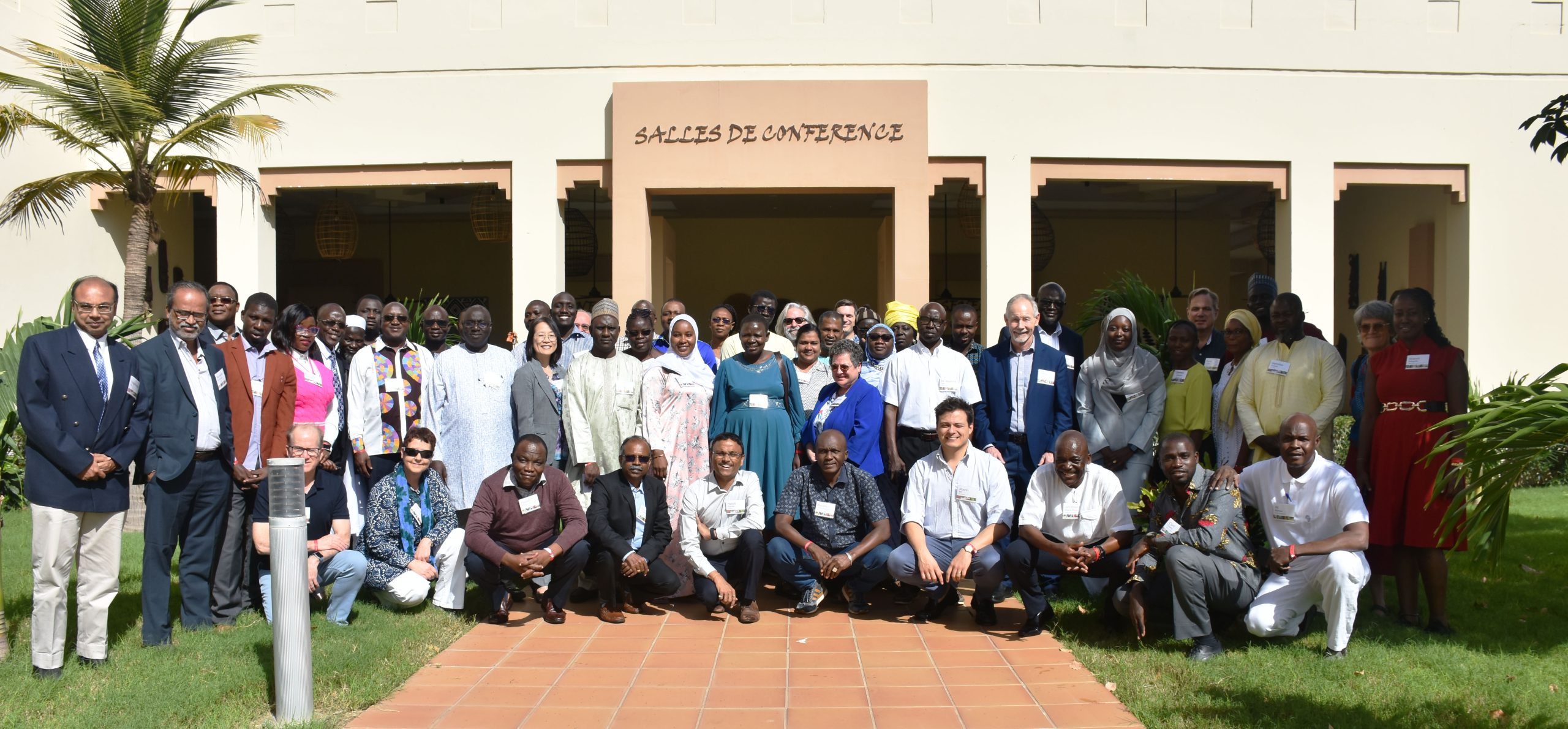Revolutionizing food security: Africa’s millet renaissance
Revolutionizing food security: Africa's millet renaissance – CIMMYT CIMMYT


In a landmark initiative to bolster sustainable agriculture and food security
The consultative workshop ‘Bottlenecks to Expansion of Pearl and Finger Millets in Africa’
In a landmark initiative to bolster sustainable agriculture and food security, the consultative workshop ‘Bottlenecks to Expansion of Pearl and Finger Millets in Africa’ marked a pivotal step towards revitalizing millet cultivation across the continent. Spearheaded by the Bill & Melinda Gates Foundation, in collaboration with CIMMYT and the Senegalese Institute of Agricultural Research (ISRA), a meeting held in Senegal united global experts to unlock the untapped potential of millets as a cornerstone of sustainable agriculture and food security in Africa.
Identifying the symptoms of the problem and underlying issues
The discussions included identifying the symptoms of the problem, underlying issues causing these symptoms, and the interventions needed to be implemented to address these issues. This collaborative efforts among national and international organizations including government bodies, research institutes, and NGOs, demonstrated the goal of revitalizing millet cultivation through partnerships.

The International Year of Millets
The United Nations General Assembly declared 2023 the International Year of Millets to raise awareness of and direct policy attention to millets’ nutritional and health benefits and their suitability for cultivation under adverse and changing climatic conditions.
Lessons learned from India
India, a key player in millet production, provided valuable insights into millet cultivation and consumption, providing a potential model for Africa to emulate in its millet-related strategies.
National and international collaborations
A panel discussion shed light on national and international initiatives that highlighted collaborative efforts in crop improvement and millet innovations.
CIMMYT’s role in dryland crop innovation
Recognizing the ever-evolving needs of society at large, CIMMYT began an initiative to advance research and broaden its impact by implementing the Dryland Crops Program.
SDGs, Targets, and Indicators
1. SDGs Addressed or Connected to the Issues Highlighted in the Article:
- SDG 2: Zero Hunger
- SDG 3: Good Health and Well-being
- SDG 6: Clean Water and Sanitation
- SDG 8: Decent Work and Economic Growth
- SDG 12: Responsible Consumption and Production
- SDG 13: Climate Action
- SDG 15: Life on Land
- SDG 17: Partnerships for the Goals
The article addresses the issues of sustainable agriculture, food security, nutrition, climate change, and partnerships, which are all connected to the Sustainable Development Goals listed above.
2. Specific Targets Under Those SDGs Based on the Article’s Content:
- SDG 2.3: By 2030, double the agricultural productivity and incomes of small-scale food producers, in particular women, indigenous peoples, family farmers, pastoralists, and fishers, including through secure and equal access to land, other productive resources and inputs, knowledge, financial services, markets, and opportunities for value addition and non-farm employment.
- SDG 2.4: By 2030, ensure sustainable food production systems and implement resilient agricultural practices that increase productivity and production, that help maintain ecosystems, that strengthen capacity for adaptation to climate change, extreme weather, drought, flooding, and other disasters, and that progressively improve land and soil quality.
- SDG 3.4: By 2030, reduce by one-third premature mortality from non-communicable diseases through prevention and treatment and promote mental health and well-being.
- SDG 6.4: By 2030, substantially increase water-use efficiency across all sectors and ensure sustainable withdrawals and supply of freshwater to address water scarcity and substantially reduce the number of people suffering from water scarcity.
- SDG 8.3: Promote development-oriented policies that support productive activities, decent job creation, entrepreneurship, creativity, and innovation, and encourage the formalization and growth of micro-, small-, and medium-sized enterprises, including through access to financial services.
- SDG 12.2: By 2030, achieve the sustainable management and efficient use of natural resources.
- SDG 13.3: Improve education, awareness-raising, and human and institutional capacity on climate change mitigation, adaptation, impact reduction, and early warning.
- SDG 15.1: By 2020, ensure the conservation, restoration, and sustainable use of terrestrial and inland freshwater ecosystems and their services.
- SDG 17.6: Enhance North-South, South-South, and triangular regional and international cooperation on and access to science, technology, and innovation and enhance knowledge sharing on mutually agreed terms, including through improved coordination among existing mechanisms in particular at the United Nations level and through a global technology facilitation mechanism.
3. Indicators Mentioned or Implied in the Article:
- Increased agricultural productivity and incomes of small-scale food producers
- Sustainable food production systems
- Increase in land and soil quality
- Reduction in premature mortality from non-communicable diseases
- Improved water-use efficiency and reduced water scarcity
- Promotion of productive activities, job creation, and access to financial services
- Sustainable management and efficient use of natural resources
- Education, awareness, and capacity-building on climate change
- Conservation, restoration, and sustainable use of terrestrial ecosystems
- Enhanced regional and international cooperation on science, technology, and innovation
The article mentions or implies these indicators as measures of progress towards the identified targets under the Sustainable Development Goals.
Table: SDGs, Targets, and Indicators
| SDGs | Targets | Indicators |
|---|---|---|
| SDG 2: Zero Hunger | 2.3: Double agricultural productivity and incomes of small-scale food producers | Increased agricultural productivity and incomes of small-scale food producers |
| SDG 2: Zero Hunger | 2.4: Ensure sustainable food production systems and implement resilient agricultural practices | Sustainable food production systems |
| 3.4: Reduce premature mortality from non-communicable diseases | Reduction in premature mortality from non-communicable diseases | |
| SDG 6: Clean Water and Sanitation | 6.4: Increase water-use efficiency and address water scarcity | Improved water-use efficiency and reduced water scarcity |
| SDG 8: Decent Work and Economic Growth | 8.3: Promote development-oriented policies and access to financial services | Promotion of productive activities, job creation, and access to financial services |
| SDG 12: Responsible Consumption and Production | 12.2: Achieve sustainable management and efficient use of natural resources | Sustainable management and efficient use of natural resources |
| SDG 13: Climate Action | 13.3: Improve education, awareness, and capacity on climate change | Education, awareness, and capacity-building on climate change |
| SDG 15: Life on Land | 15.1: Ensure conservation, restoration, and sustainable use of terrestrial ecosystems | Conservation, restoration, and sustainable use of terrestrial ecosystems |
| SDG 17: Partnerships for the Goals | 17.6: Enhance regional and international cooperation on science, technology, and innovation
Behold! This splendid article springs forth from the wellspring of knowledge, shaped by a wondrous proprietary AI technology that delved into a vast ocean of data, illuminating the path towards the Sustainable Development Goals. Remember that all rights are reserved by SDG Investors LLC, empowering us to champion progress together. Source: cimmyt.org
Join us, as fellow seekers of change, on a transformative journey at https://sdgtalks.ai/welcome, where you can become a member and actively contribute to shaping a brighter future.
|








